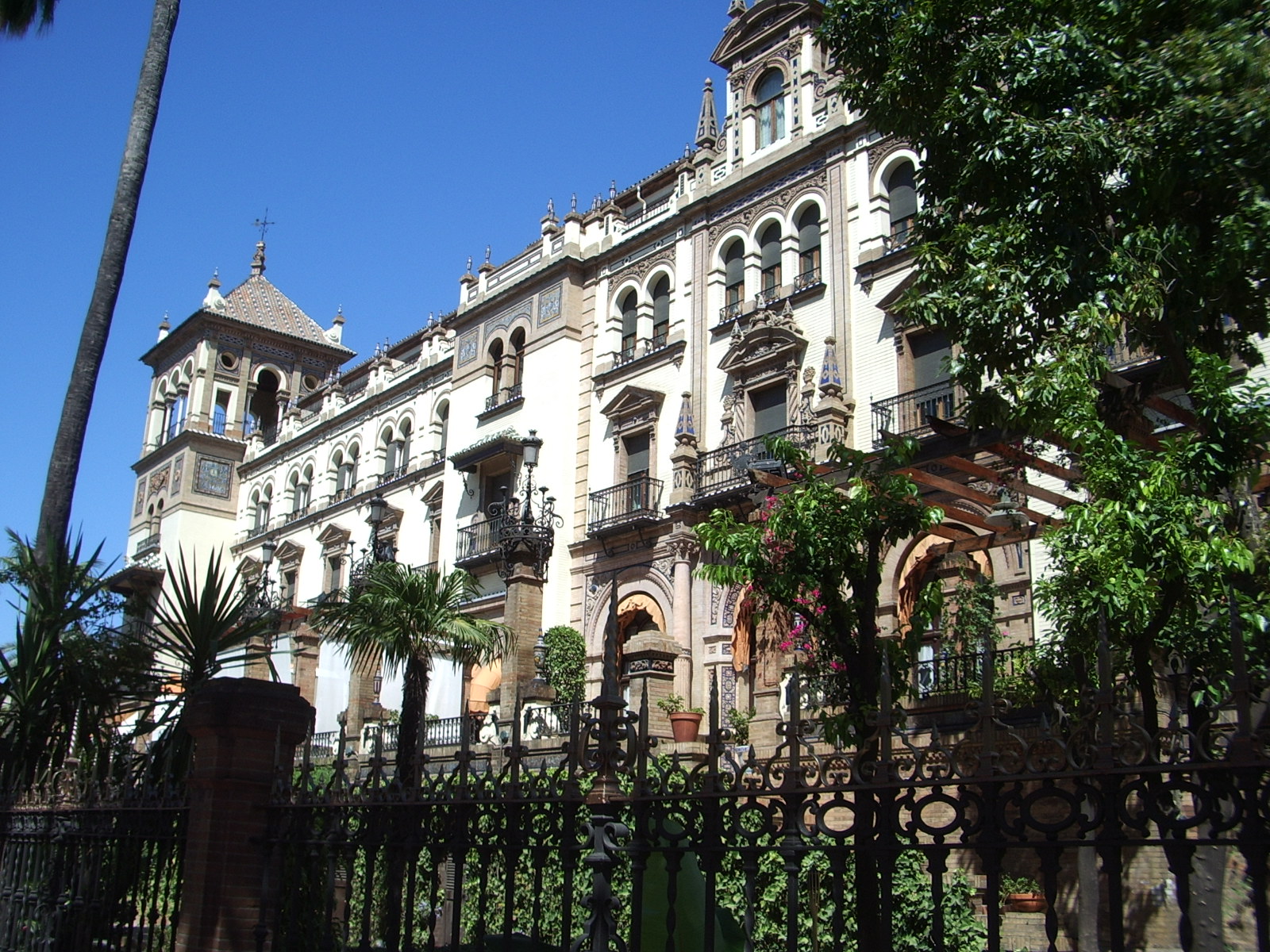|
Hotel Alfonso XIII
Hotel Alfonso XIII is a historic hotel in Seville, Spain, located on Calle San Fernando, next to the University of Seville. Designed by the architect José Espiau y Muñoz, it was built between 1916 and 1928 especially for the Ibero-American Exposition of 1929. It officially opened on April 28, 1929, with a sumptuous banquet attended by King Alfonso XIII and Queen Victoria Eugenie of Battenberg. The hotel is owned by the City of Seville and managed by The Luxury Collection division of Marriott International. History Designed by architect José Espiau y Muñoz, the hotel was built between 1916 and 1928, and officially inaugurated on 28 April 1929, with a celebration preceded by King Alfonso XIII and Queen Victoria Eugenia. The reason of the celebration was the wedding of Infanta Isabel with count Juan Zamoyski. The hotel was a winning project chosen among others after a contest was held under the direction of renowned architect Aníbal González. Espiau reached the award, a ... [...More Info...] [...Related Items...] OR: [Wikipedia] [Google] [Baidu] |
Seville
Seville (; es, Sevilla, ) is the capital and largest city of the Spanish autonomous community of Andalusia and the province of Seville. It is situated on the lower reaches of the River Guadalquivir, in the southwest of the Iberian Peninsula. Seville has a municipal population of about 685,000 , and a metropolitan population of about 1.5 million, making it the largest city in Andalusia, the fourth-largest city in Spain and the 26th most populous municipality in the European Union. Its old town, with an area of , contains three UNESCO World Heritage Sites: the Alcázar palace complex, the Cathedral and the General Archive of the Indies. The Seville harbour, located about from the Atlantic Ocean, is the only river port in Spain. The capital of Andalusia features hot temperatures in the summer, with daily maximums routinely above in July and August. Seville was founded as the Roman city of . Known as ''Ishbiliyah'' after the Islamic conquest in 711, Seville became ... [...More Info...] [...Related Items...] OR: [Wikipedia] [Google] [Baidu] |
Azulejo
''Azulejo'' (, ; from the Arabic ''al- zillīj'', ) is a form of Spanish and Portuguese painted tin-glazed ceramic tilework. ''Azulejos'' are found on the interior and exterior of churches, palaces, ordinary houses, schools, and nowadays, restaurants, bars and even railways or subway stations. They are an ornamental art form, but also had a specific functional capacity like temperature control in homes. There is also a tradition of their production in former Spanish and Portuguese colonies in North America, South America, the Philippines, Goa (India), Lusophone Africa, East Timor, and Macau (China). ''Azulejos'' constitute a major aspect of Spanish architecture and Portuguese architecture to this day and are fixtures of buildings across Spain and Portugal and its former territories. Many azulejos chronicle major historical and cultural aspects of Spanish and Portuguese history. History 13th to 15th century The word ''azulejo'' (as well as the Ligurian ''laggion'') is derived ... [...More Info...] [...Related Items...] OR: [Wikipedia] [Google] [Baidu] |
Diana, Princess Of Wales
Diana, Princess of Wales (born Diana Frances Spencer; 1 July 1961 – 31 August 1997) was a member of the British royal family. She was the first wife of King Charles III (then Prince of Wales) and mother of Princes William and Harry. Her activism and glamour made her an international icon, and earned her enduring popularity, as well as almost unprecedented public scrutiny. Diana was born into the British nobility, and grew up close to the royal family on their Sandringham estate. In 1981, while working as a nursery teacher's assistant, she became engaged to the Prince of Wales, the eldest son of Queen Elizabeth II. Their wedding took place at St Paul's Cathedral in 1981 and made her Princess of Wales, a role in which she was enthusiastically received by the public. The couple had two sons, William and Harry, who were then second and third in the line of succession to the British throne. Diana's marriage to Charles suffered due to their incompatibility and extramarital af ... [...More Info...] [...Related Items...] OR: [Wikipedia] [Google] [Baidu] |


